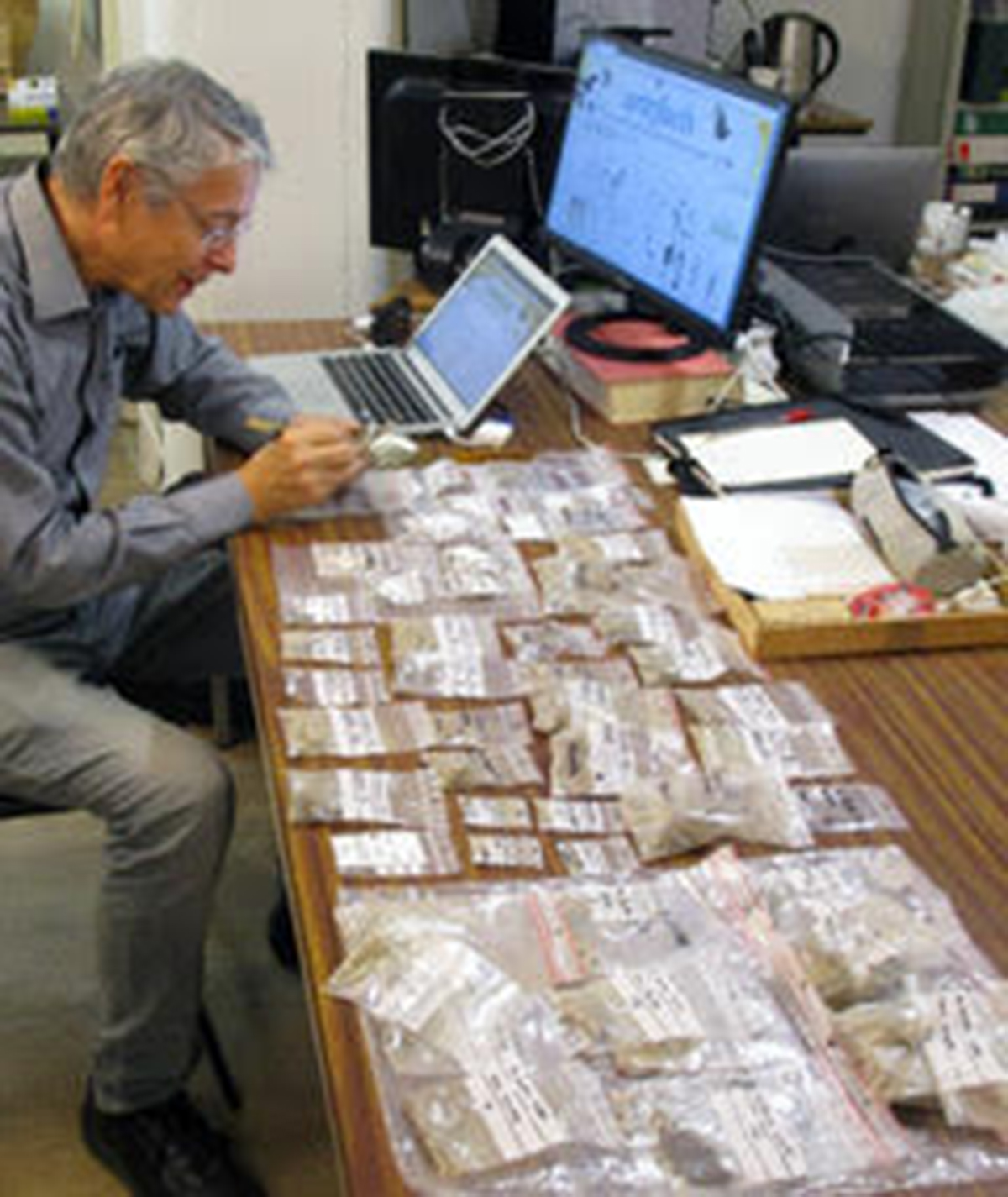In the summer of 2021 Théo-Txomin Quirce met Pierre-Antoine Lamy for an interview. Learn how the Research and Conservation department of the Bavay Ancient Forum works with the new director of the site.
Interview with Pierre-Antoine Lamy
Manager and former head of the Research and Conservation Department of the Bavay Ancient Forum
Pierre-Antoine Lamy, can you tell us about your background?
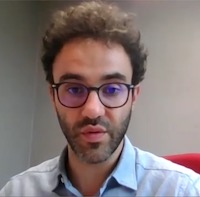 I started with a bachelor’s degree in Art History and Archaeology at the University of Burgundy, then I continued with a research-oriented master’s degree in the History and Archaeology of the Ancient and Medieval Worlds. Finally, I graduated in 2015 with a thesis on Aedui Statuary Production. I also have a good experience in fieldwork, both in programmed and preventive work. Therefore, my current position is a good synthesis between research and these operations.
I started with a bachelor’s degree in Art History and Archaeology at the University of Burgundy, then I continued with a research-oriented master’s degree in the History and Archaeology of the Ancient and Medieval Worlds. Finally, I graduated in 2015 with a thesis on Aedui Statuary Production. I also have a good experience in fieldwork, both in programmed and preventive work. Therefore, my current position is a good synthesis between research and these operations.
How did you become interested in archaeology, objects (especially sculptures) and their conservation?
| I became interested in archaeology at quite an early age. As a child, I was very curious about the past and the great discoveries. But what really got me into it was my first excavation! It took place in 2001 in Bibracte, at the school camp of the Domus PC1 in the « Parc aux chevaux ».The archaeological operations in which I participated in made me care for the artifacts that I found. I also wanted to build a particular connection with local materials, especially stone, having grown up in Burgundy. I chose to specialize in the statuary field because studying it would allow me to take an interdisciplinary approach, combining art history and archaeology. |
|
What does your role as head of the Research and Conservation Department consist of?
First of all, my job is to manage the collection. I am assisted by two collection managers. I supervise their work and take decisions on projects such as the construction of collections, in agreement with the management of the Bavay Ancient Forum. I also take care of the strategic and logistical orientations by distributing the tasks within the team.
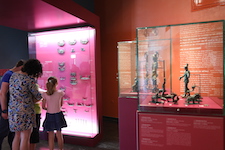 Beyond the collection, I’m the museum’s scientific referent. For instance, I may be tasked to develop educational tools which make history and archaeology easier to learn. I actively participate in the future of the institution by building a scientific and cultural project while managing the organization of exhibitions. I am the relay of the scientific community since I communicate with the researchers, all the while proposing research axes to the students, allowing them to realize their university project.
Beyond the collection, I’m the museum’s scientific referent. For instance, I may be tasked to develop educational tools which make history and archaeology easier to learn. I actively participate in the future of the institution by building a scientific and cultural project while managing the organization of exhibitions. I am the relay of the scientific community since I communicate with the researchers, all the while proposing research axes to the students, allowing them to realize their university project.
Through these roles, I also am the ambassador for a community and its heritage.
When was the department established? Who are its members?
The department was established in 2007. We are a small team of four people. Currently, in addition to myself, we have Laurent Bouthor and Sylvie Rorive, the two collection managers, and Marie-Laure Florent-Michel, who is in charge of the digital project.
How would you define the concepts of research and conservation from your point of view?
With the terms research and conservation, we necessarily enter the field of heritage. Heritage is what we pass on. Research and conservation are two sister concepts. They are part of a dynamic process. If there is no research, valorization is impossible. First there must be the scientific statement, then the study, and only after the understanding can there be popularization and transmission. If you do not transmit research, you freeze the heritage. The collection stops living.
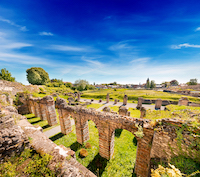 Conservation serves the same purpose as research. To preserve for future generations, of course, but to preserve for the present as well. Today, in Bavay, we are able to make an object, the collection, the site, speak. Tomorrow, we will be able to use tools such as the covering of the cryptoportico. This conservation also ensures the comfort of the visitors.
Conservation serves the same purpose as research. To preserve for future generations, of course, but to preserve for the present as well. Today, in Bavay, we are able to make an object, the collection, the site, speak. Tomorrow, we will be able to use tools such as the covering of the cryptoportico. This conservation also ensures the comfort of the visitors.
Research is made alongside all these efforts, during restorations for the exhibitions for instance.
What are the department’s research and conservation missions?
The department’s missions are many and varied. They concern the management of the collection (inventory, study), its valorization (selection of objects for exhibitions), its conservation, as well as the participation in scientific collaborations between the different actors of archaeology in the department: the Departmental Service of Archaeology and Heritage (programmed excavations and preventive excavations), the University of Lille, the Regional Directorates of Cultural Affairs (DRAC), for example.
Can you give us some information about the composition of the collection?
At the Ancient Forum of Bavay, we keep about 70,000 artifacts.
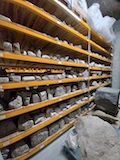 Of these, 7,700 are listed in the Micromusée inventory, a large number of which are part of the collections of the Museums of France (Musées de France). The remaining 65,000 or so, discovered during previous excavations in the Forum, are part of the archaeological furniture. The objects discovered are sent to the Research and Conservation Department for an inventory, which is carried out in two ways. If they are considered sufficiently important from a scientific and cultural point of view, they are integrated into the Micromusée database in order to acquire the status of a Museum of France collection. If not, they will be included in the study collections, where items are regrouped in lots meant to be studied by professionals and/or students. In this case, if significant information is provided (manufacture, use, dating, etc.), they can be added to the Museum of France collections. A final aspect concerns a minority of objects. These are objects that are also inventoried, but that can be presented to the public as they are and can be taken from the reserves for temporary exhibitions or a reorganization of the permanent exhibition.
Of these, 7,700 are listed in the Micromusée inventory, a large number of which are part of the collections of the Museums of France (Musées de France). The remaining 65,000 or so, discovered during previous excavations in the Forum, are part of the archaeological furniture. The objects discovered are sent to the Research and Conservation Department for an inventory, which is carried out in two ways. If they are considered sufficiently important from a scientific and cultural point of view, they are integrated into the Micromusée database in order to acquire the status of a Museum of France collection. If not, they will be included in the study collections, where items are regrouped in lots meant to be studied by professionals and/or students. In this case, if significant information is provided (manufacture, use, dating, etc.), they can be added to the Museum of France collections. A final aspect concerns a minority of objects. These are objects that are also inventoried, but that can be presented to the public as they are and can be taken from the reserves for temporary exhibitions or a reorganization of the permanent exhibition.
Do the strategies differ depending on the destination of the collection?
The strategies are involved with conservation, research, and development. We are in a museum after all, and our goal is to present objects to the public in order to help them f understand Gallo-Roman culture. Whenever we make decisions about any objects in the collection, these three main elements are accounted for. These decisions may be influenced by other factors such as the decennial document, research projects, preventive conservation, restoration or archaeological curation.
To finish this interview, can you tell us a few words about the context of the discovery of the trumpet?
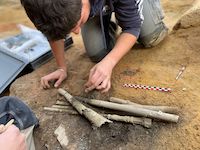 I can’t tell you anything more than what has already been published in the press because all this remains to be interpreted and put into a stratigraphical and chronological perspective. This trumpet was found dismantled, inside a pit dated to the end of the third century CE, in the southern branch of the cryptoportico, in April 2021, by the Departmental Archaeology and Heritage Service, during the preventive excavation. It is in curative conservation and soon in restoration at the National Centre for Research and Restoration of Museums of France (C2RMF, Centre de Recherche et de Restauration des Musées de France) in Paris. It has benefited from joint examinations and expertise of specialists such as Benoît Mille, Christophe Vendries and Sibylle Emerit.
I can’t tell you anything more than what has already been published in the press because all this remains to be interpreted and put into a stratigraphical and chronological perspective. This trumpet was found dismantled, inside a pit dated to the end of the third century CE, in the southern branch of the cryptoportico, in April 2021, by the Departmental Archaeology and Heritage Service, during the preventive excavation. It is in curative conservation and soon in restoration at the National Centre for Research and Restoration of Museums of France (C2RMF, Centre de Recherche et de Restauration des Musées de France) in Paris. It has benefited from joint examinations and expertise of specialists such as Benoît Mille, Christophe Vendries and Sibylle Emerit.
What else can I say? That’s about it because I can’t really commit myself on what will happen next. Oh right! I can tell you that this is probably the third best preserved Roman trumpet discovered in Gaul! I think that some very nice surprises will be coming our way after the work of the C2RMF judging the quality of its realization and the materials used.
Acknowledgements
I would like to thank Pierre-Antoine Lamy for accepting the invitation of ArkeoTopia and Sylvie Rorive for introducing me to his manager.
Source
- Quirce Théo-Txomin et Gransard-Desmond Jean-Olivier. [In French Only] Recherche, conservation et valorisation au Forum antique de Bavay : rencontre avec Pierre-Antoine Lamy, YouTube, 0:39:18, 6 janvier 2022.
Learn more
- Tann. “French archaeologists discover rare Gallo-Roman trumpet at the Roman Forum in Bavay”. Archaeology News Network, May 7th 2021. [On Line] archaeonewsnet.com/french-archaeologists-discover-rare
- Gybels, M. “The Gallo-Roman Site and Museum of Bavay (Bagacum) in France”. Time Travel Rome, July 12th, 2021. [On Line] timetravelrome.com/2021/07/12/gallo-roman-site-of-bavay-bagacum
- Set up your visit to the Ancient Forum of Bavay on its dedicated website: [In French Only] forumantique.fr
- Lamy P.-A. [English description available] From the quarry till the discard : stone sculpture in the Aedui civitas : Ist-IVth centuries C.E.. PhD thesis supervised by Daniele Vitali, University of Burgundy, Dijon, 2015.
Would you like us to do an interview, a book or documentary review, or another review relating to archaeology, whether for the general public, for children or for specialists? Write to us thanks to our form.
ArkeoTopia, an alternative approach to archaeology® aims to take a fresh look at the archaeology of today to contribute to preparing for the archaeology of tomorrow. To learn more about us, feel free to check out our institutional video and our activities.






